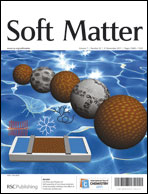This study contributes to the understanding of how the structure of preadsorbed polyelectrolyte layers affects their interaction with oppositely charged surfactants. The adsorbed amount, and thus the adsorption layer structure of poly(ethylene imine), (PEI), was tuned by the pH (4, 6 and 9) of the PEI adsorption. Following the PEI adsorption, each adsorption layer was rinsed with 10 mM NaCl solution (pHRinse = 6) to establish identical conditions for further SDS binding. The structure of the PEI adsorption layers was investigated in situ by dual polarization interferometry (DPI). By comparing the DPI results with ellipsometry results and by performing DPI and ellipsometry simulations it could be demonstrated the first time that PEI forms a vertically inhomogeneous adsorption layer that can be described as having a compact bottom part, which contains PEI molecules with a large number of surface contacts, and a swollen outer part, which includes loosely bound PEI molecules that extend far into the bulk phase. The pH of the adsorption controls not only the adsorbed mass but also the structure of the adsorbed layer, which can be further tuned by changing the pH of the rinsing solution. To investigate how the structure of the preadsorbed PEI layer affects its interfacial association with SDS, the preadsorbed polymer layers were rinsed with SDS solutions under identical conditions (10 mM NaCl, pHRinse = 6). It was found that the structure of the preadsorbed PEI layer has a profound effect on the PEI/surfactant interaction. For instance, when the outer part of the PEI layer contained a sufficient amount of polymer segments, desorption of PEI could be prevented. In contrast, when the outer part of the PEI layer was depleted in polymer segments complete desorption could be achieved provided the polymer layer was rinsed with a high concentration (∼cmc) surfactant solution under continuous flow.

You have access to this article
 Please wait while we load your content...
Something went wrong. Try again?
Please wait while we load your content...
Something went wrong. Try again?


 Please wait while we load your content...
Please wait while we load your content...